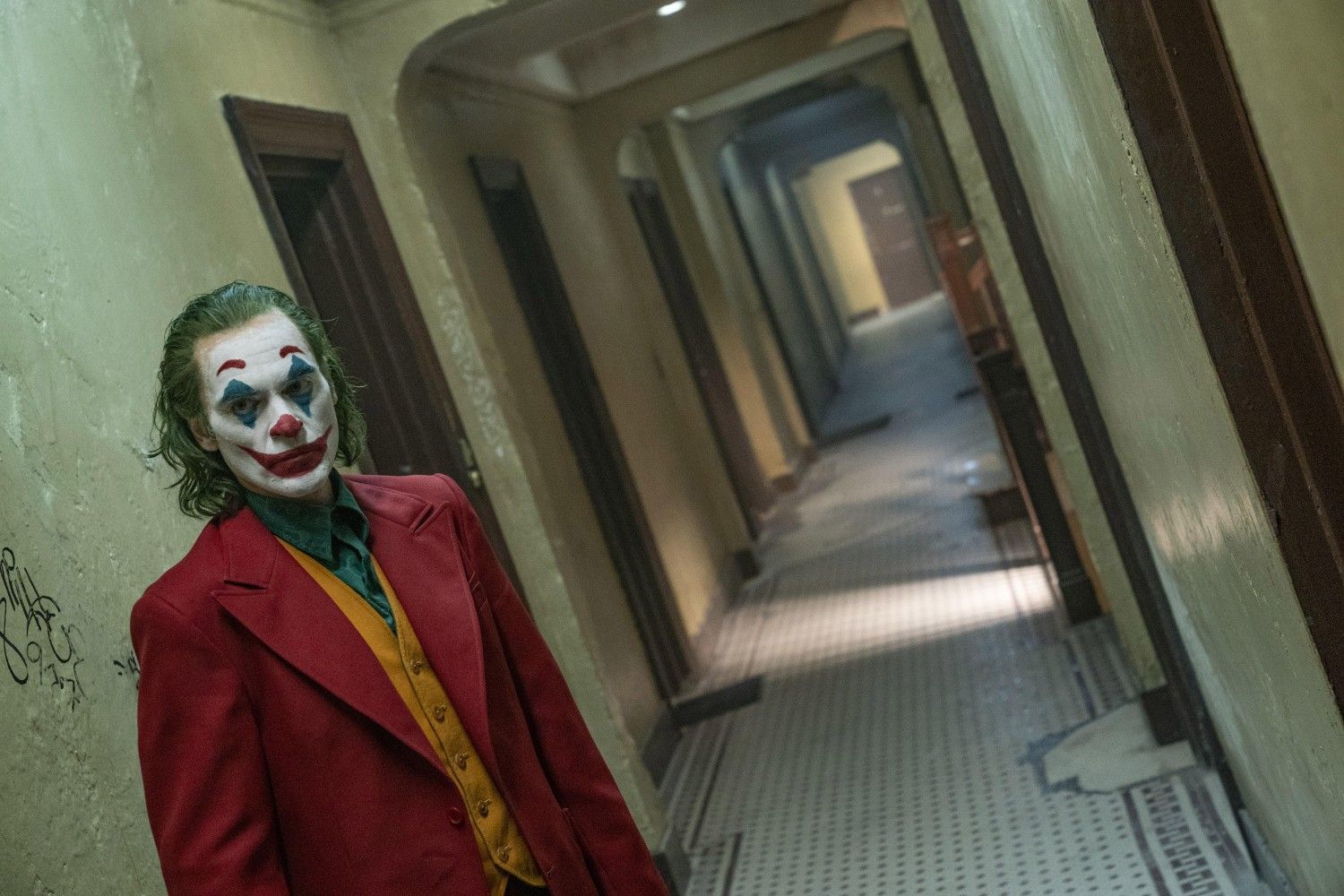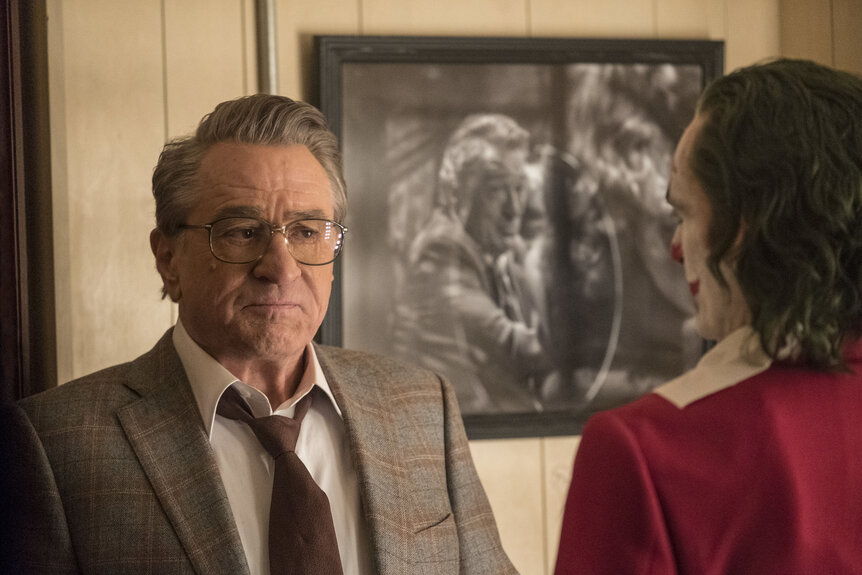Create a free profile to get unlimited access to exclusive videos, sweepstakes, and more!
Awards Contenders: How Joaquin Phoenix's Joker was sent over the edge by editing

Welcome to Awards Contenders. This month, SYFY WIRE will be talking to the actors, directors, designers, and craftspeople whose work was featured in the best movies and TV of 2019, and who have been nominated for various awards. Today, we speak with ACE-nominated editor Jeff Groth on Joker.
Editing is a key part of what makes Joaquin Phoenix's Golden Globe-winning performance in Joker so iconic. Some of the actor's most mesmerizing moments were not scripted, but rather improvised on-set. So it was up to editor Jeff Groth to determine their pacing — where to place them in the film for maximum impact.
For example, Arthur Fleck's unsettling laugh: At what point should we realize it has gone from being an involuntary part of his mental condition and transformed into something more sinister — more Joker-like? (As it turns out, that point is just before Arthur smothers his mother.) Groth chatted with SYFY WIRE about his unusual editing process on Joker, which sometimes began on-set, while the picture was being filmed.
What's it like when you're editing a film where the lead actor improvises moments not in the original script? For instance, when Joaquin Phoenix climbs in the fridge, how do you decide where to place it in the cut? How do you recalibrate?
You have to look at the whole scope. It's one thing in script form, but once you get somebody acting it out, it definitely changes. What scenes are more intense? Less intense? So when you have something that's not planned necessarily, that's not in the original structure, like the fridge scene, you have to figure out when is the character going to be capable of doing something like that?
We looked at putting that fridge scene in a couple different places, and ultimately, we found where it would be most effective — when the character would need to escape from the world. Ultimately, that's after he's been rejected by somebody he thinks is his father. That was kind of a challenge of the overall emotional arc. At the same time that you're tightening the screws on Arthur Fleck, you're loosening the reins on the Joker. One side of his personality gets tramped down, and the other side begins to flourish and be fed.
Which scripted scenes were the hardest to cut?
We always lamented cutting something out, but we didn't want to linger too long in any one spot without a good reason to do it. Ultimately it was a process of keeping a shot long, but keeping the scene short.
A good example — and possibly one of the hardest scenes to cut — was the first scene with the social worker. As scripted, it was quite long, and it really touched on everything in the movie. It was a very significant introduction to the character. Arthur brought up his relationship with his mother and his coworkers, how they thought he was strange. And every time we would look at it, we would say, "Okay, we don't need to know that yet," and we would take that piece out, and then another piece out.
We still needed to introduce the character and keep the emotional content of the scene, but we didn't need him talking about his work or stretching his shoes, because we get to see him do that in his workplace.
How did editing while on set help you?
I was only on set for the Murray Franklin sequences. It was an important piece to make sure we had everything. I cut as much as I could in order of the script, even though you shoot out of order. Because of Joaquin's performance, there were so many valid options. How do you choose between five great takes? So it was all about building context for the moment. Which one is going to be the right reaction for the character, for the progression of his character up to this point?
I would imagine that the Murray Franklin sequence would be challenging because of the different vantage points — the audience's point of view, the TV camera footage, the monitors…
Yes, absolutely. When I was putting it together on set, I was taking the TV camera footage and building it as Joker's appearance on the Murray Franklin show as what you would have seen watching it at home on TV. Once that was established, I went back and recut it with all the movie camera angles. In the end, we only used the TV cameras sparingly, when we needed to remind you that the world was watching.
How many variations were there, considering Arthur did try to rehearse his appearance? At what point does Arthur decide not to kill himself, but to kill Murray instead?
There were like six or seven different entrances. There were times where he would be more fascinated by the audience's reaction to him, and there were times where he would ignore the audience and focus on Murray. Ultimately, we ended up going with the one where we thought it obviously wasn't going to Arthur's plan, but going to Joker's plan at this point. Behind the curtain, he set himself up for a different appearance than what we saw him practice, even if we didn't know that yet.
We always wanted you to think that suicide was still part of his plan, or at least, that he was capable of it. That idea is a little microcosm of the movie. It happens as the scale tips over in the course of that scene, but there's never really any one thing that tips it. We did originally have some people reacting to the TV appearance, like in the director's booth, but in the end, you don't see a whole lot of reaction, because once you get down on that floor, we wanted to keep it tight, and keep the intensity. In a way, it's like two boxers in a ring — Joker and Murray Franklin going head to head, and keeping you down there with them.
There is one reading of the film that none of this happened, that it was all in Arthur's imagination during his hospitalization. What was it like playing with the film's levels of ambiguity?
Obviously, the first time he's at the Murray Franklin show, it's unambiguously a fantasy. If you read the entire movie as a fantasy, I suppose it's a fantasy within a fantasy. He's an unreliable narrator, so we try to keep you engaged with him and at the same time let him play with you so you wouldn't quite know what was reality. I wouldn't say there's a definitive answer to that. I think watching it a second time with an eye toward that is a worthwhile rewatch. That's a fun thing to do.



























